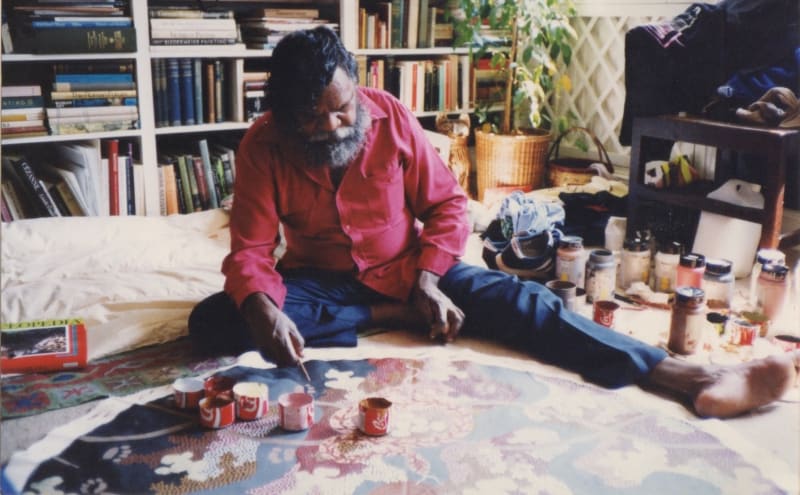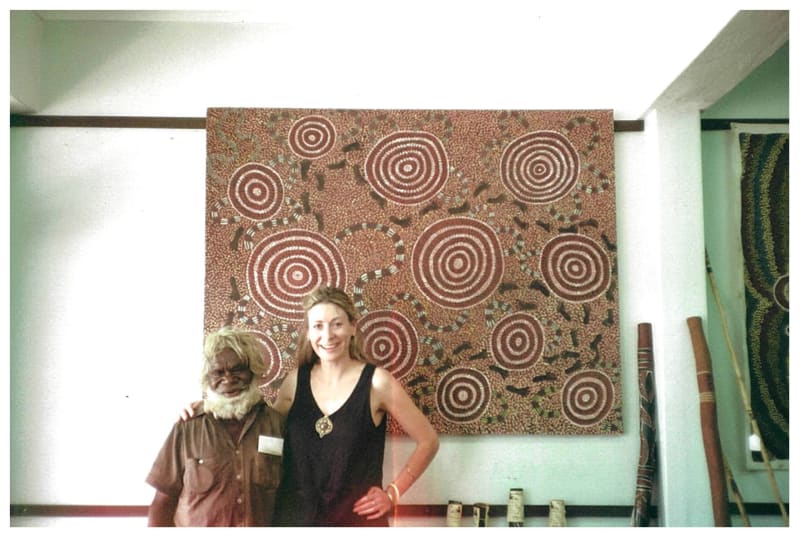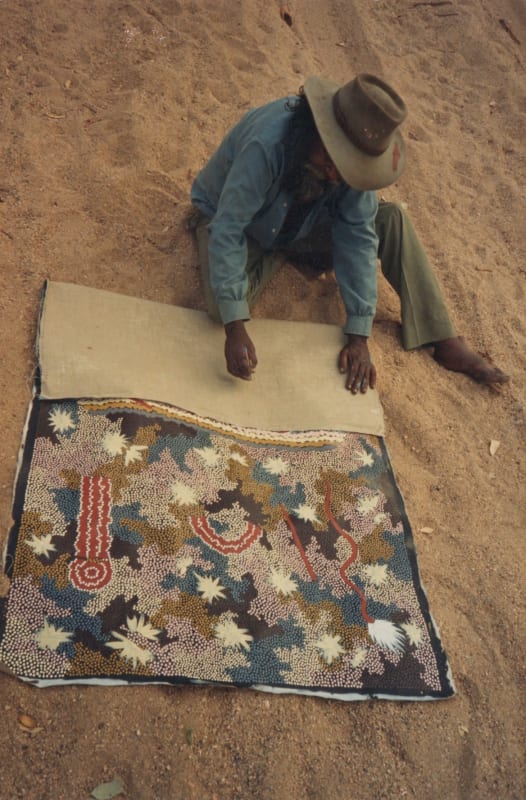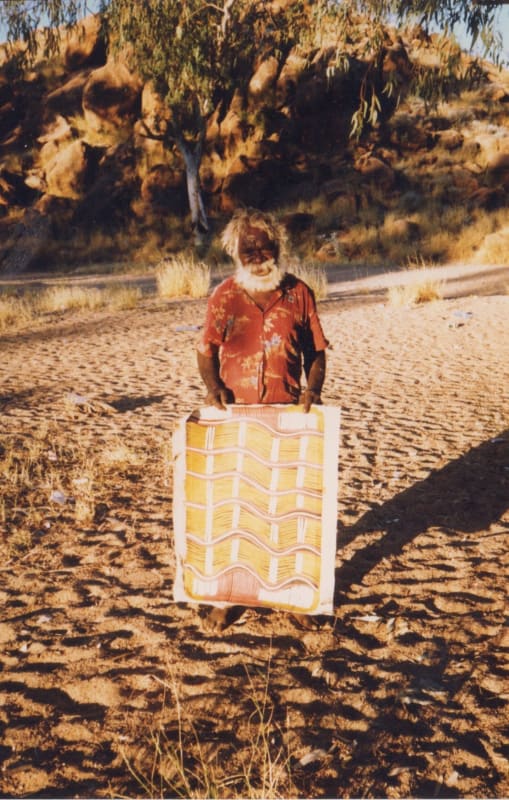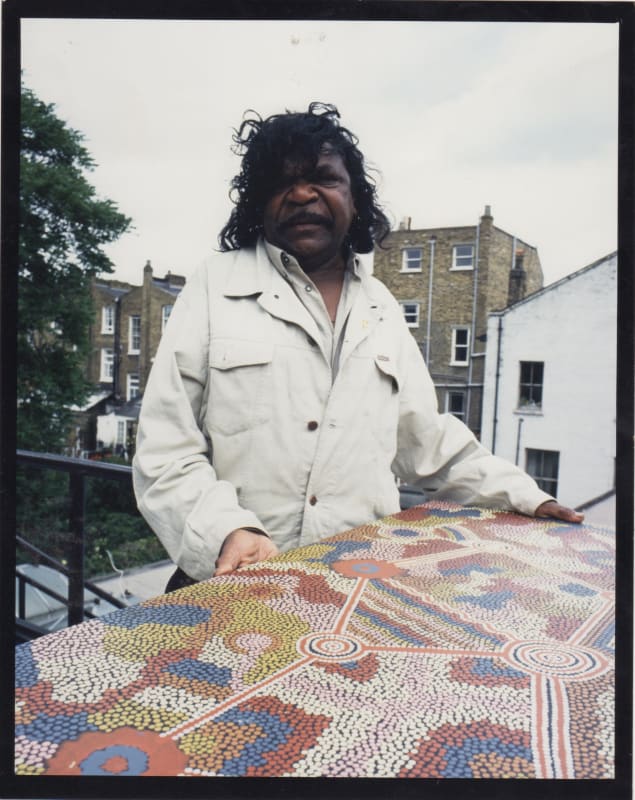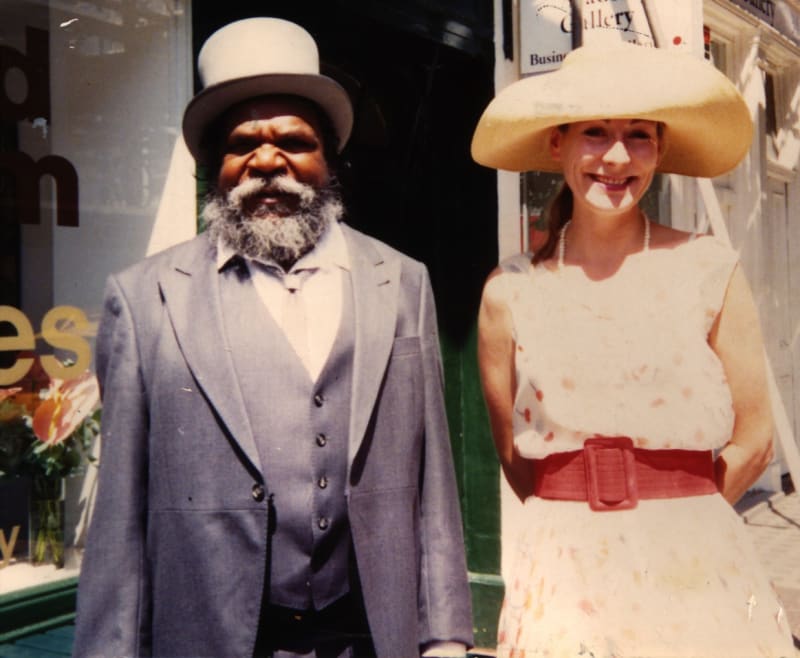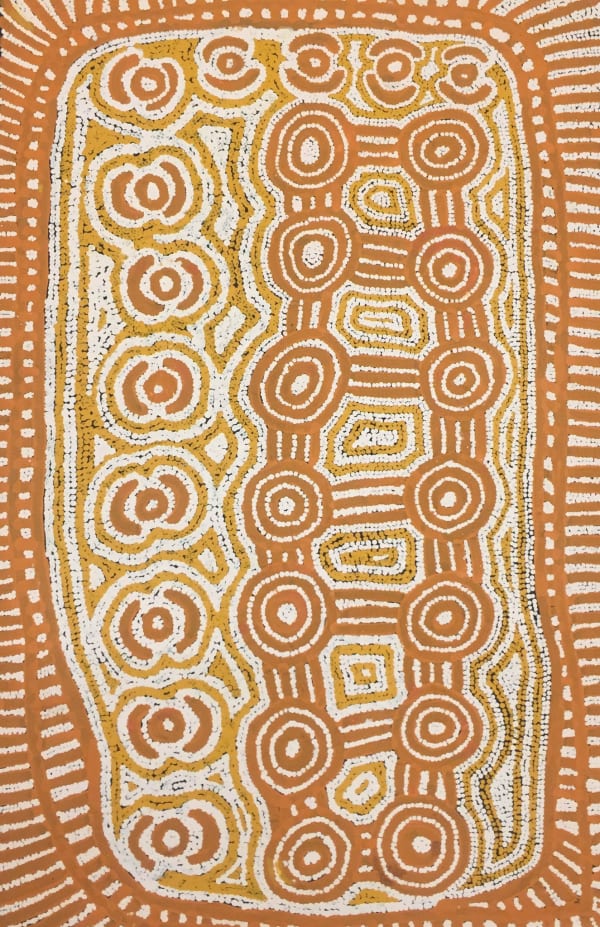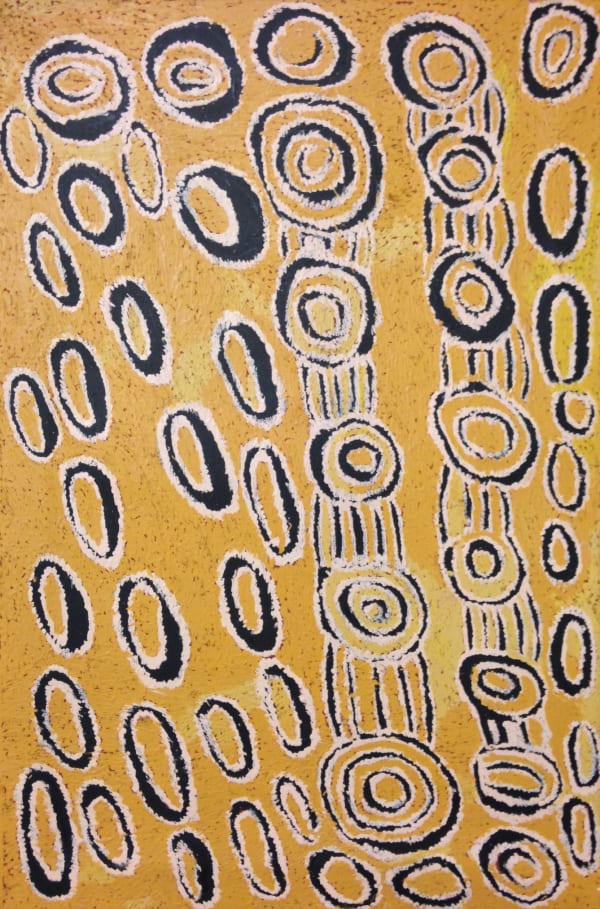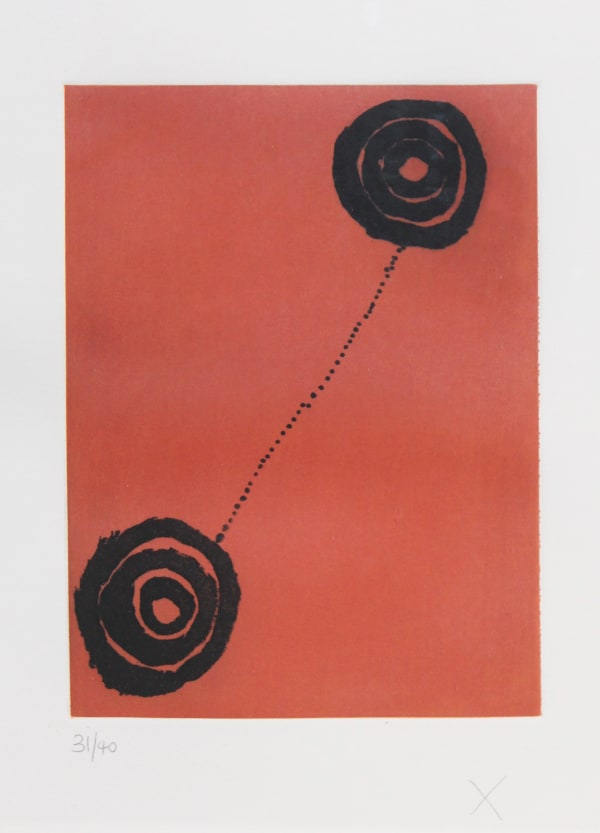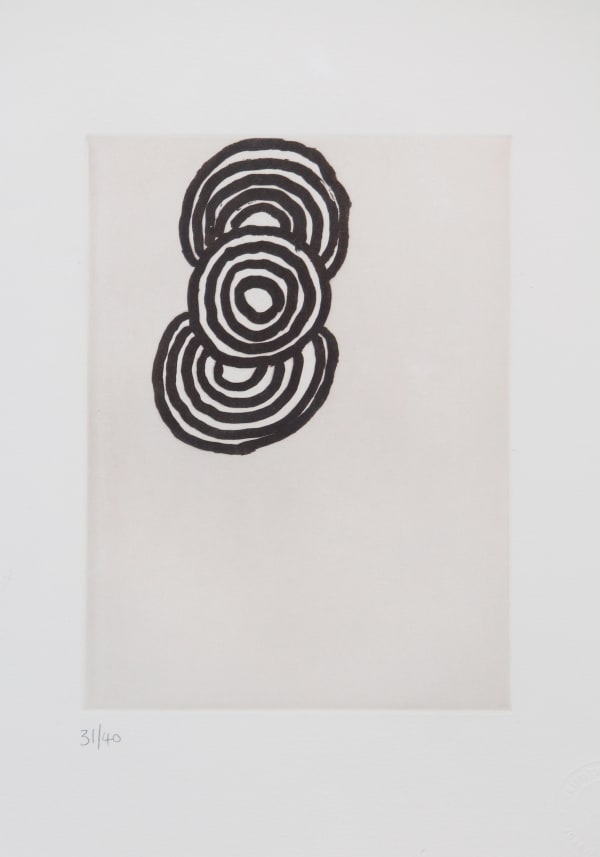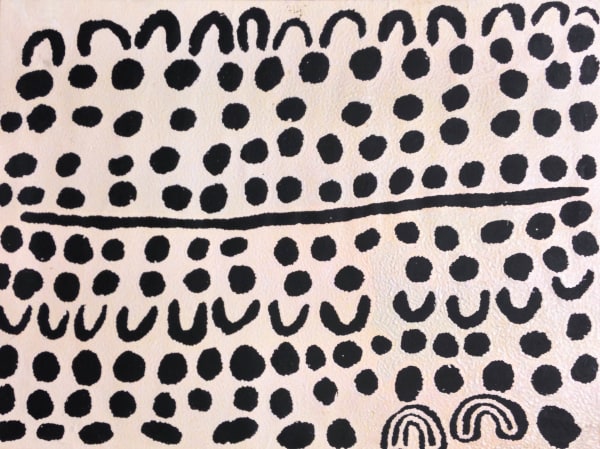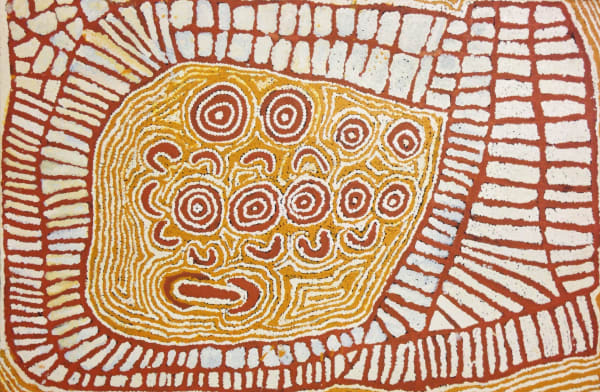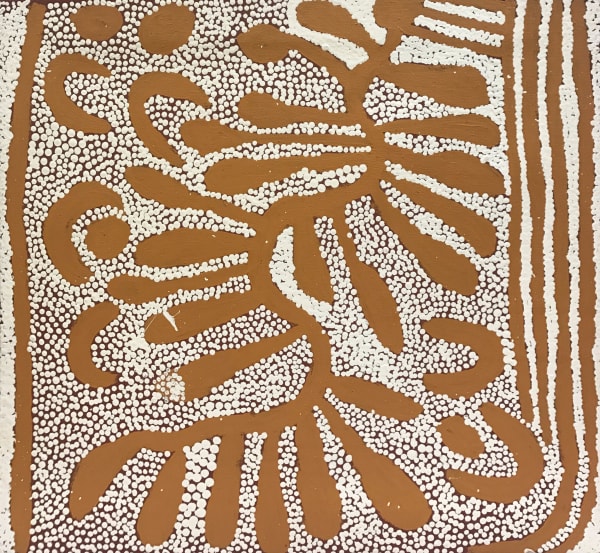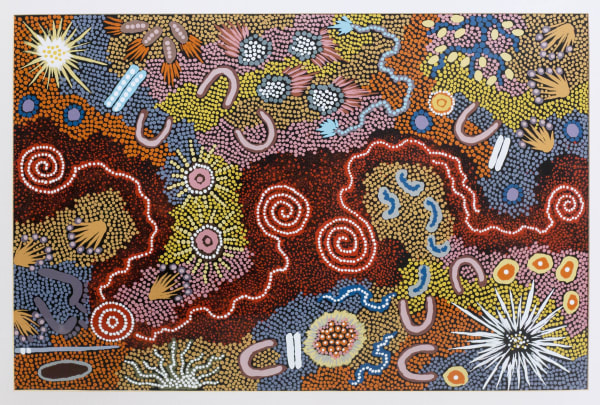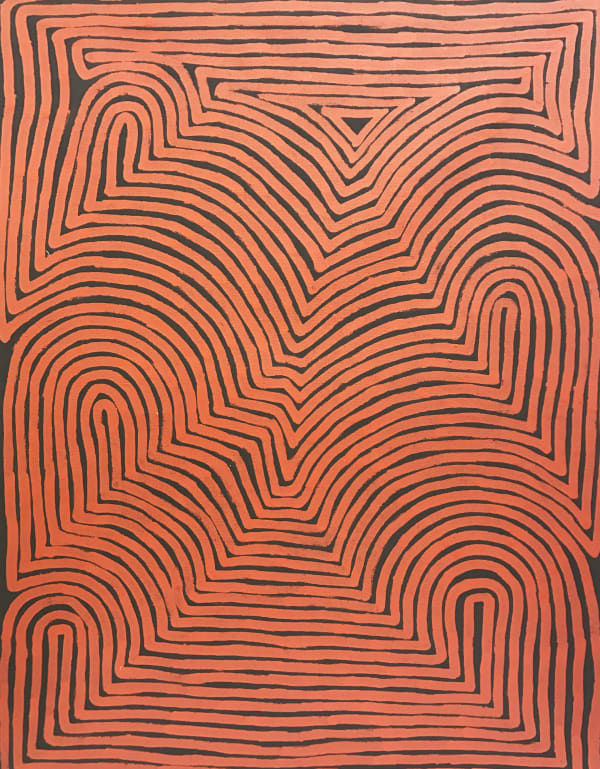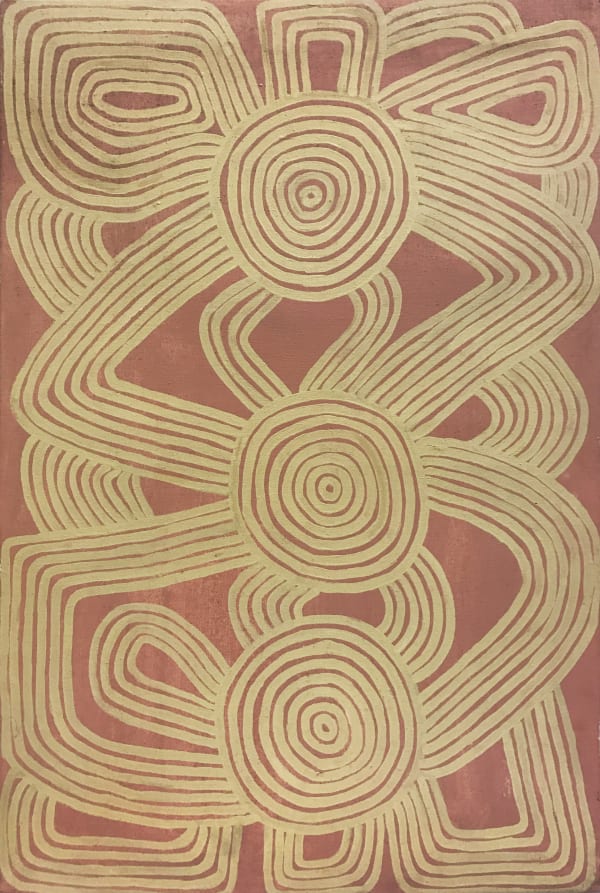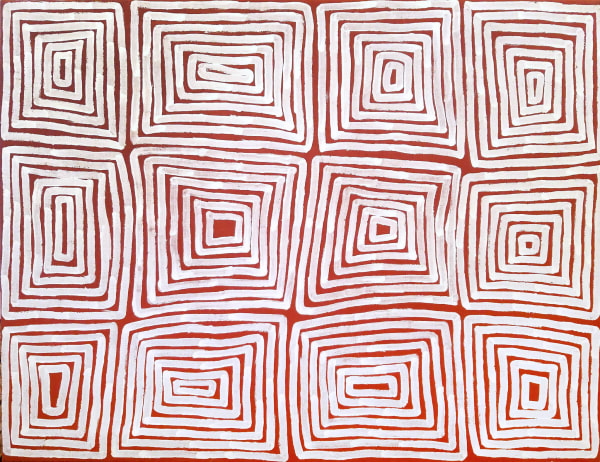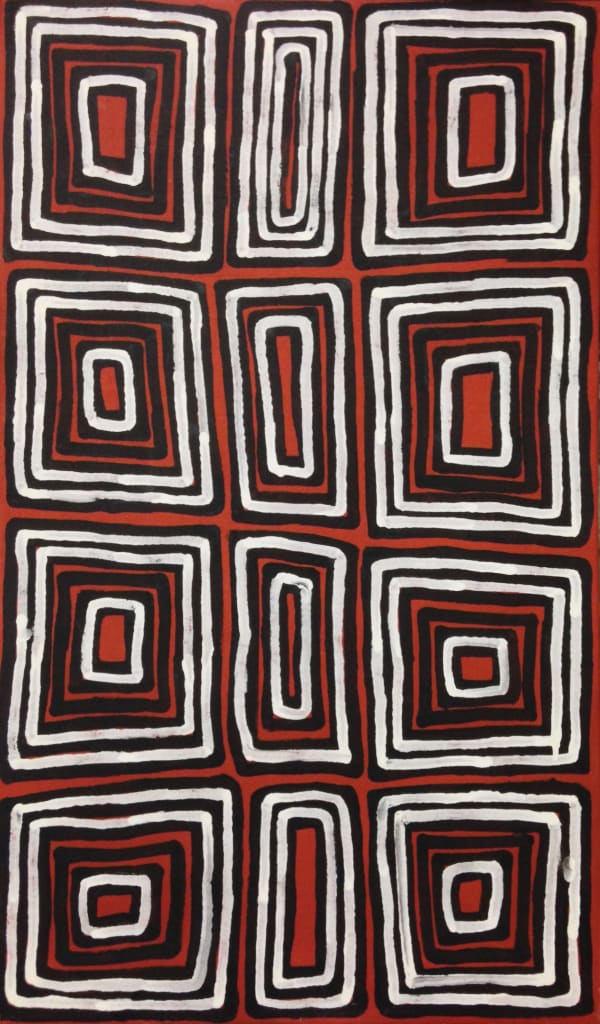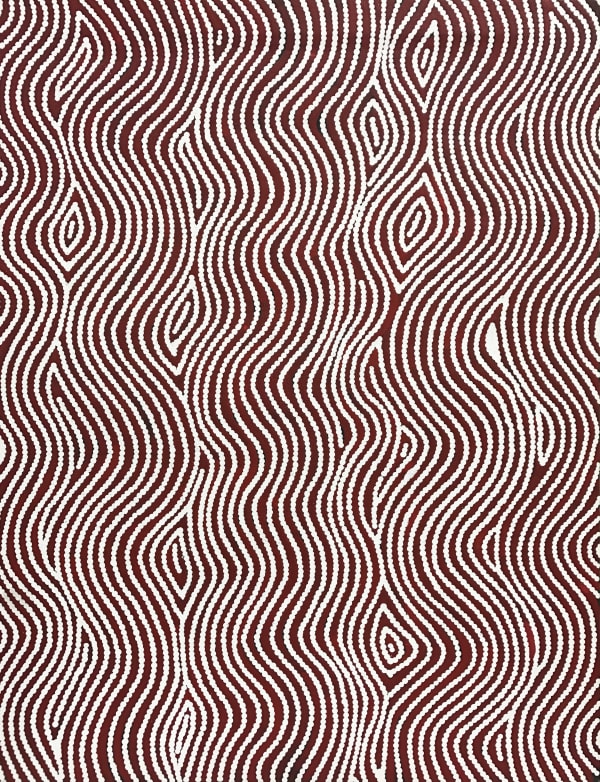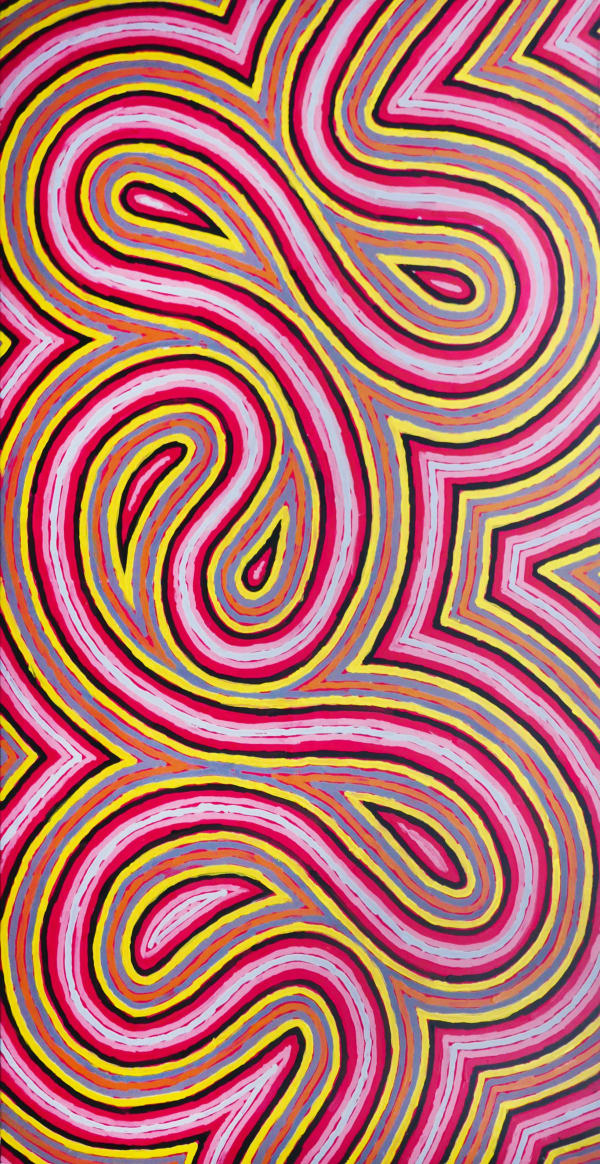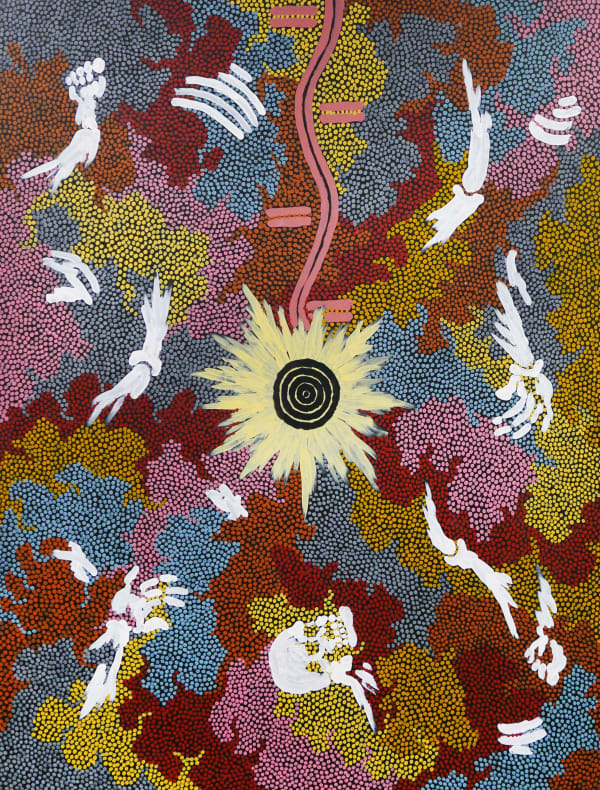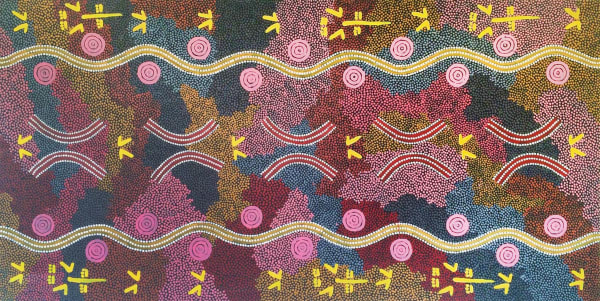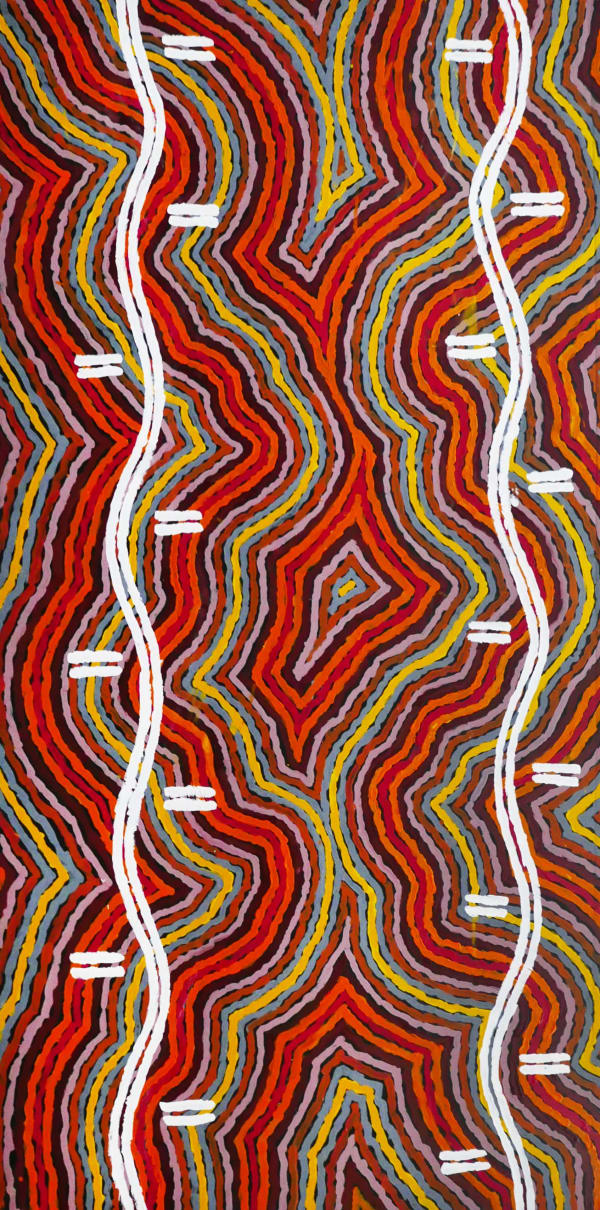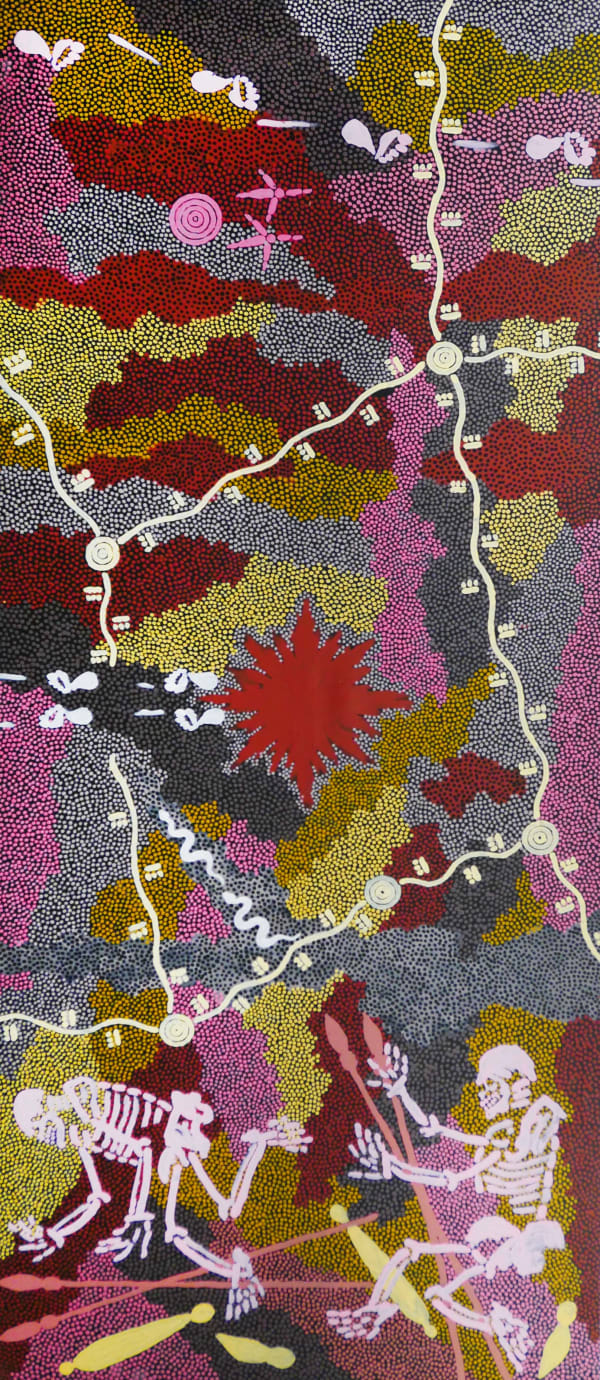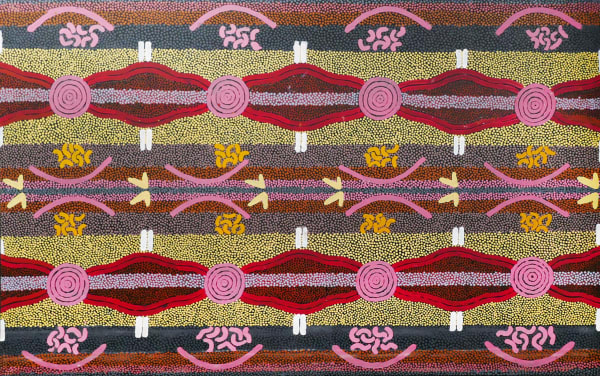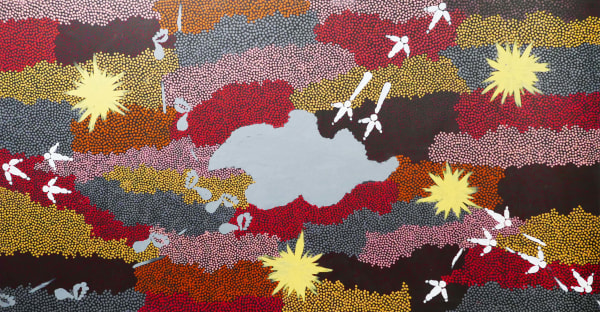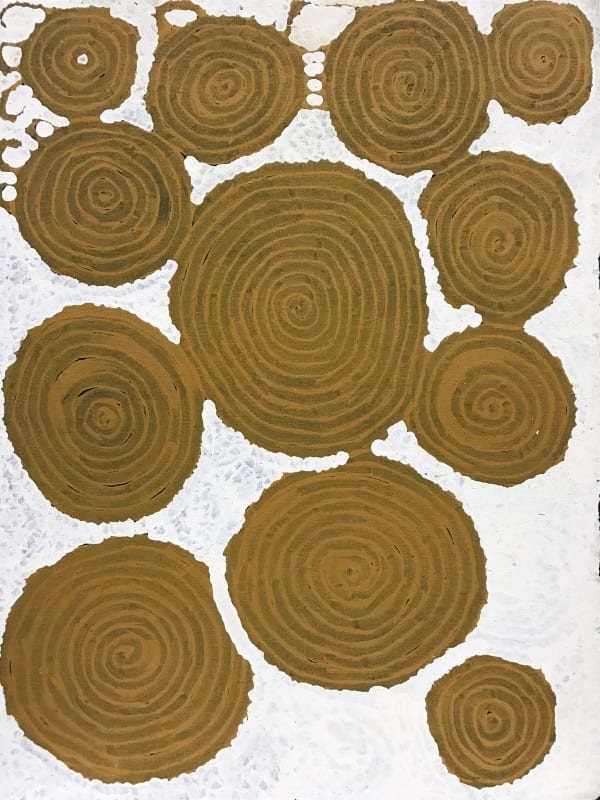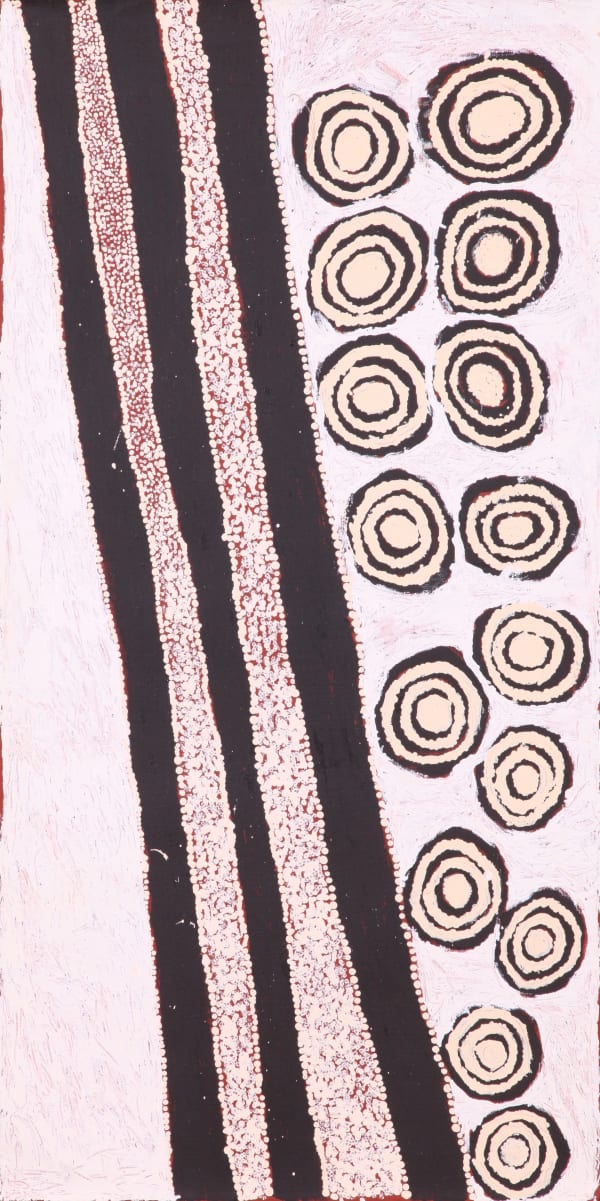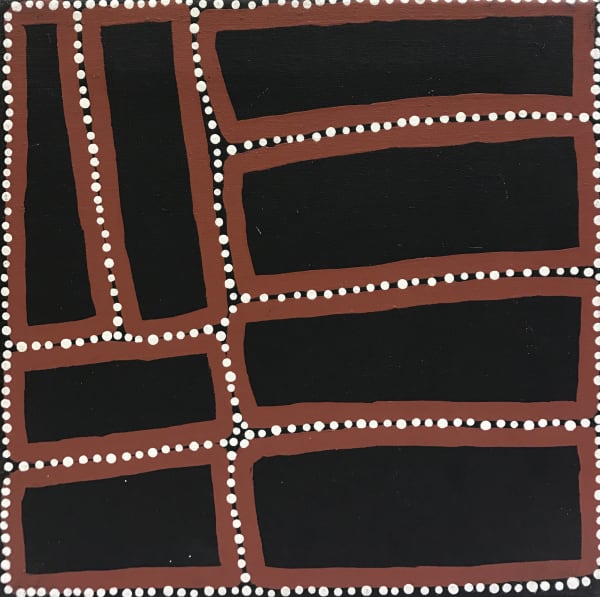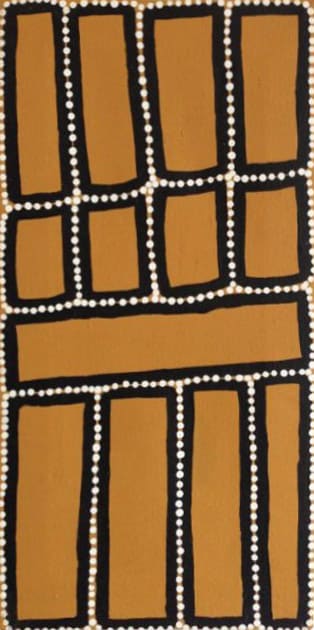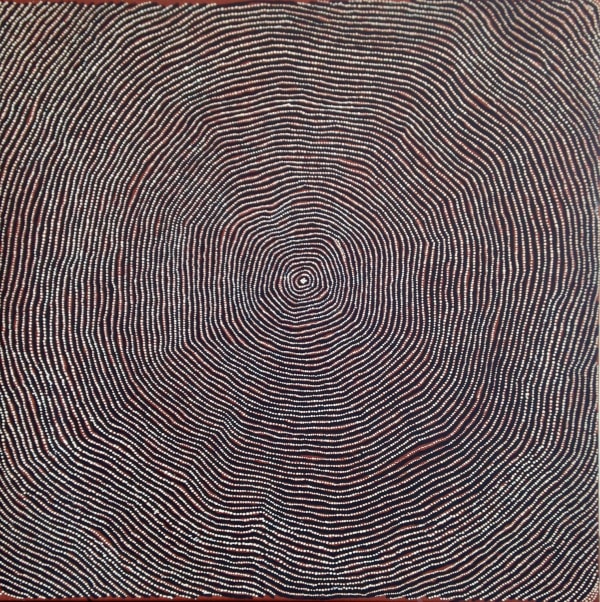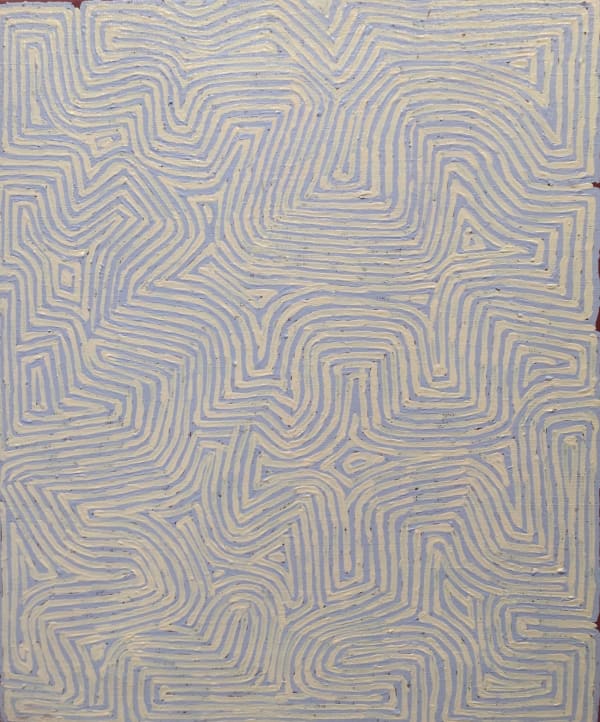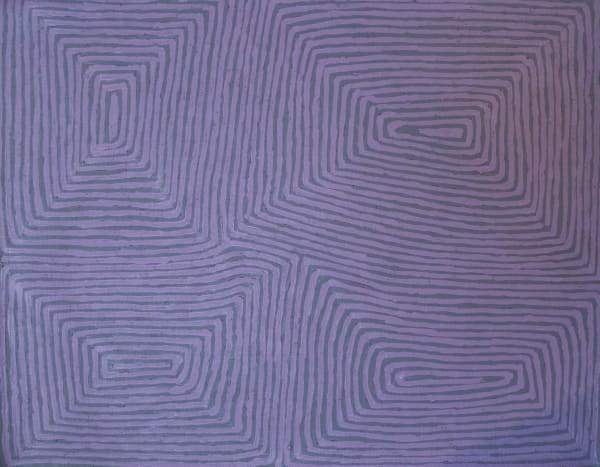The desert community of Papunya, 150 miles northwest of Alice Springs, holds a special place in the story of Australian Aboriginal Art. It was here that the Desert Painting movement took hold at the beginning of the 1970s.
The community itself dated from 1959. Nomadic aboriginals from many different language groups (including Luritja, Pintupi and Anmatyerr) had been brought together and settled here by the government. Many felt deracinated and abandoned, their cultural traditions under threat. This began to change in 1971 with the arrival of young Sydney art-teacher, Geoffrey Bardon, who encouraged some of the aboriginal men to paint one of their traditional 'Dreaming' motifs as a mural on the local school building. The project produced a great outpouring of artistic and cultural expression - with many men beginning to set down designs in paint on board. This marked the beginnings of a painting movement that spread, gradually, to other desert communities across Australia, and awoke the world to the richness and vitality of Aboriginal artistic tradition.
Amongst that first generation of painters from Papunya, were Billy Stockman Tjapaltjarri, Johnny Warangkula Tjupurrula, Long Jack Phillipus Tjakamarra, Kaapa Tjampitjinpa, and Clifford Possum Tjapaltjarri - all of whom have exhibited at the Rebecca Hossack Art Gallery. Clifford Possum came to London twice for his major one-man shows in 1988 and 1990, and Rebecca was instrumental not only in his meeting the Queen (and presenting her with one of his paintings), but also in his providing a design for the tail-fins of the re-branded British Airways fleet.
The initial impetus of the art movement at Papunya has been sustained by subsequent generations of both male and female painters. And the Rebecca Hossack Art Gallery has continued to exhibit works by leading artists from the community, including Nyurapayia Nampitjinpa (Mrs Bennett), Ningura Napurrula and Anatjari Tjakamarra.
